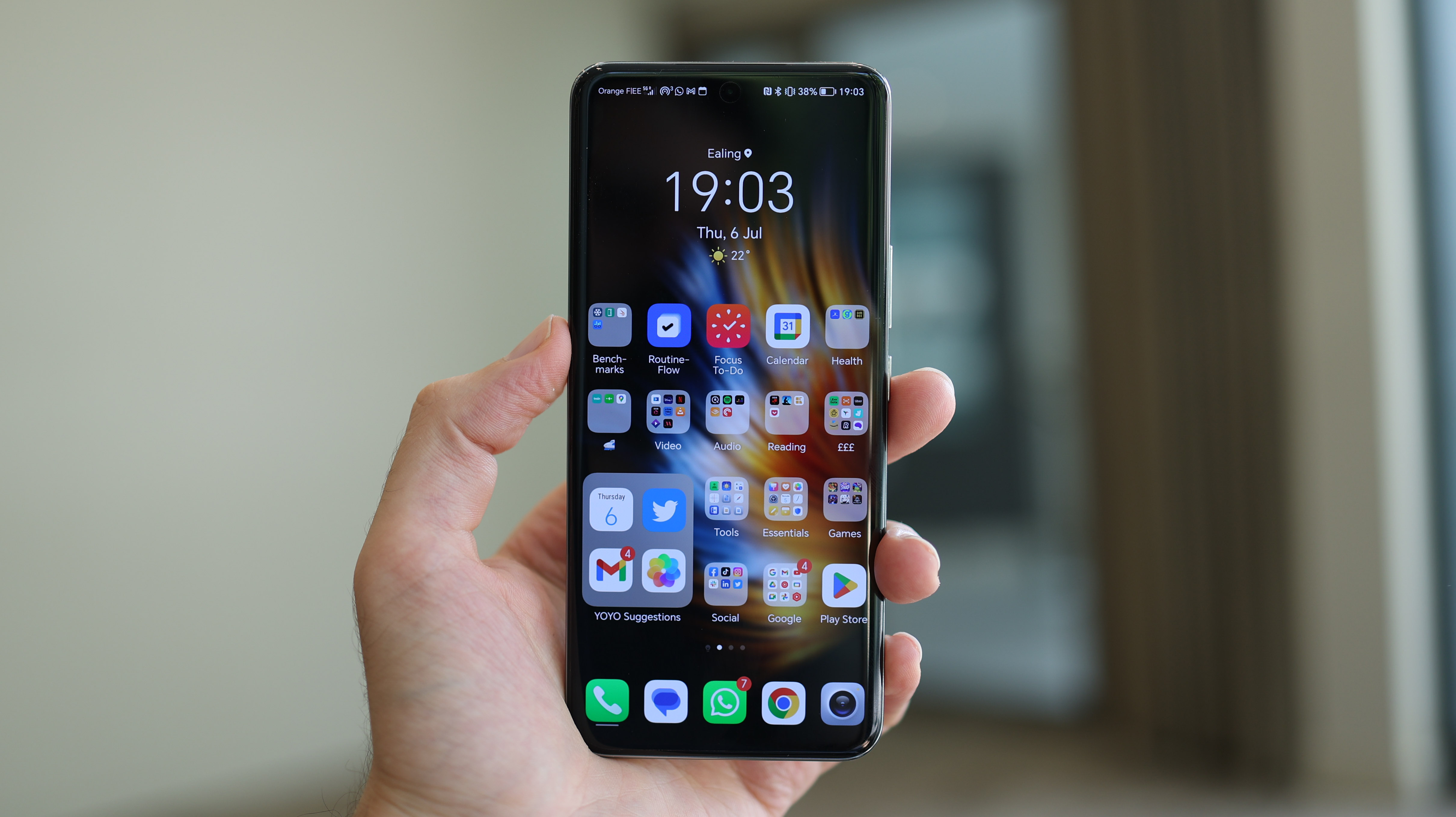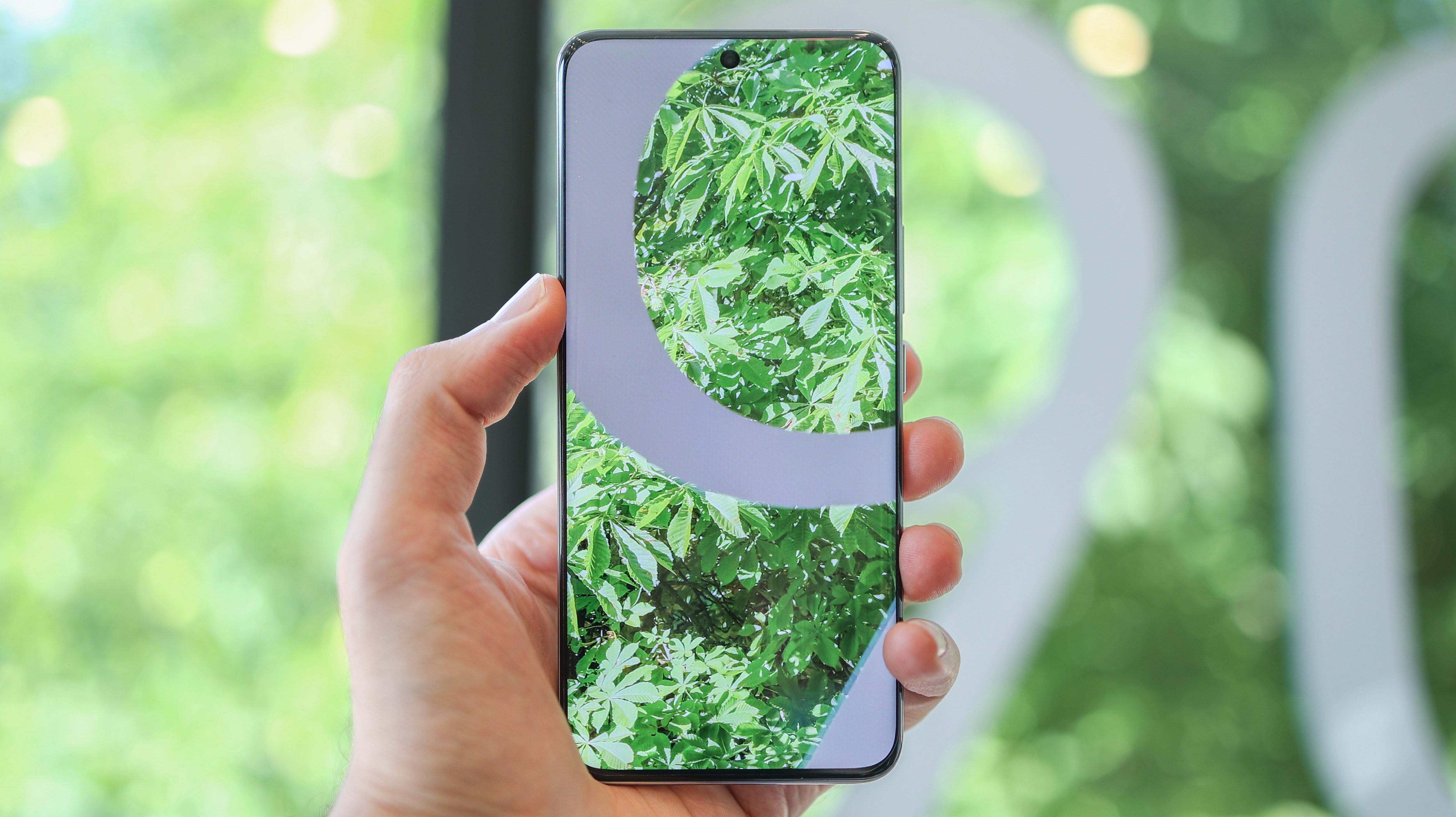Digital Camera World Verdict
The Honor 90's camera misses out on OIS – something most rivals pack – but its 200MP main camera is still very capable thanks to Honor's powerful photo processing. Reasonably strong ultra-wide and selfie cameras also help turn it into a powerful imaging tool, especially once you work out its quirks. Add a best-in-class display and storage credentials to the mix, not to mention solid performance and app support, and this is a mighty package that takes on devices like the Pixel 7a and Nothing Phone (1) with gusto.
Pros
- +
Best-in-class display
- +
Plenty of storage for the price
- +
Respectable camera performance
- +
Fast charging and long-lasting battery
Cons
- -
Mono-speaker is easy to cover up
- -
Magic OS has some bloatware
- -
No water or dust resistance
- -
No wireless charging
Why you can trust Digital Camera World
The Honor 90 launches with two headline features: a 200MP camera and a DxOmark-rated best-in-class screen. Those two highlights are enough to make us pay attention. Still, when you factor in the rest of the phone’s flourishes: a 50MP selfie camera, curved glass across the front and back, and an abundance of storage – 256GB or 512GB – double what you’d expect at the Honor 90’s price, there’s enough here to make it an instant hit on paper.
Honor’s also had a good run of launches since it parted ways with Huawei a couple of years ago. Its Honor Magic 4 Pro and Magic 5 Pro are excellent camera phones, and last year’s Honor 70 – the predecessor to the Honor 90 – impressed, even if it didn’t wow us.
But there is one fly in Honor’s ointment – the Magic Vs – a foldable that highlights the areas Honor struggles the most, specifically, software differentiation.
So does the Honor 90 hit the brief – serving up almost-flagship highlights at a fraction of the price while nailing user experience – or is it an imbalanced phone with too many megapixels that misses the mark overall?
Honor 90 review: design and screen
The Honor 90 is clearly a chip off the Honor 70's block. It’s available in four colors, Diamond Silver (the version we tested), Emerald Green, Midnight Black, and Peacock Blue (not available in the UK). The camera placement is similar to the Honor 70, but the 90's dual-ring design has been updated with beveled edges, and the whole phone is very smooth in the hand.
Honor has kept things relatively premium with a curved glass back that melds into the frame. While the sides look like metal, the Honor 90’s frame is actually plastic. The front of the phone is a quad-curved glass that seamlessly slopes into the top, bottom, and sides.
There’s a pre-fitted screen protector on the phone we tested, though no case in the box or power adapter, and no IP rating, so the phone isn’t certified dust or water-resistant.
The best camera deals, reviews, product advice, and unmissable photography news, direct to your inbox!






With a typical mix of buttons and highlights, the Honor 90’s USB-C port, SIM tray, and speaker are all at the base, with the volume and power buttons on the right side.
The Diamond Silver Honor 90 we tested has a glossy back with a textured, dotted pattern that adds a little grip. To our eyes, it resembled a dinner napkin more than anything else and clung onto fingerprints. Alternatively, the Emerald Green option, which keeps fingerprints at bay better, is a little less divisive with its uniform, diffuse finish.
The best thing about the Honor 90 is its screen and the lengths Honor has gone to make sure that out of the gate, it’s optimized for popular services. Specifically, we’re talking about Amazon Prime Video and Netflix HDR certification, making it a strong streaming phone at launch.
Measuring 6.7 inches, the phone and, in turn, screen are big, with a similar footprint to the iPhone 14 Pro Max. Content looks immersive, and with 10-bit color and 100% DCI-P3 coverage, colors look zingy but still realistic.
That zing is down to the OLED technology at the heart of the Honor 90 screen experience. With its Dynamic refresh rate, it’s smooth, too, capping out at 120Hz. We love that Honor gives you the option to set the refresh rate to 60Hz, 90Hz, or 120Hz, or leave it to automatically decide based on what’s on screen.
With excellent viewing angles and impressive brightness, in addition to a peak brightness of 1,600 nits in HDR mode and a minimum brightness of 90 nits, it’s easy to see what’s on-screen when outdoors, even on a sunny day.

Honor’s also been pushing PWM dimming, with the Honor 90 rated at 3840Hz. This relates to the amount of flicker at low-brightness levels, and while not noticeable to many, can result in eye strain and headaches after long periods for some. 3840Hz is best-in-class for anyone affected by this.
The only tell this isn’t a flagship display is the Honor 90’s screen resolution, despite clocking in at wide Full HD versus the 2K or 4K screens of some top-tier handsets, visuals still look crisp. And so, between the very good hardware and excellent software optimizations at play here, we’re inclined to agree with DxOmark’s best-in-class rating for the Honor 90’s screen.
For anyone looking to pick up the phone to watch on, while the screen is superb, the speaker isn’t. While many phones in the price-bracket feature dual speakers, the Honor 90 just has a single bottom-firing speaker. It’s loud but is easy to cover up, so when gaming or watching landscape video while holding the phone with two hands, you will need to use headphones if you don't want muffled audio.
Honor 90 review: camera specs
The Honor 90 starts at £449 (around $570), making it one of the lowest-cost options around to sport Samsung's 200MP ISOCELL HP3 sensor.
Measuring 1/1.4-inch, it's larger than most sensors in the phone's price bracket – and that high pixel count is matched with a wide f/1.9 aperture and PDAF. Like the Honor 70's main camera, there’s no OIS here, which could hurt performance, especially in middling to low light.
As for the Honor 90’s secondary cameras, the 12MP ultra-wide can also capture macro photography, thanks to the autofocusing, f/2.2 lens, and there's a 2MP depth camera as well.
The selfie camera on the Honor 90 squeezes a 50MP sensor into the punch-hole in the top center of the screen, though photos are taken at 12MP, and the front camera’s aperture is f/2.4.
Whether taken at 1x or 2x (digital zoom) or RAW, photos from the main camera are captured at 12MP, though there is a Hi-Res mode that can capture 200MP full-res snaps.
Other highlights include the Solo Cut feature, which makes a return, so you can capture one landscape video and cut multiple portrait clips from it focusing on subjects, as well as manual photo and video modes, in addition to usual suspects like Portrait, Panorama, Time-lapse, Slow-mo and more.

Honor 90 review: camera review
The Honor 90's 200MP sensor does a good job of taking usable photos in most conditions. Where it struggles when compared to higher-end flagships is nuance, specifically pulling out shadow information and super-crisp, croppable detail, unless steadying the phone on a surface or capturing bright scenes.
In well-lit environments, shots are loaded with color, contrast, and information. Detail is strong, focus is fast, and the Honor 90 flexes across both the wide and ultra-wide cameras.






If you want to tap into 200MP detail, you won't be able to in RAW mode, but capturing handheld shots, you're better off sticking with standard 12MP snaps.
Where 200MP mode flexes in the right ways is when you capture steadied shots in bright environments. Rest your phone on a surface or get it on a tripod, switch to Hi-res mode, wait a couple of seconds for the picture to take, and your shots will be packed with information. You can see below some examples of full 200MP photos – around 50MB each – and a variety of crops.
As you can see from the photos below, the Honor 90's great for casual, impromptu daytime snaps. The large sensor pulls up a richly soft blur when capturing close-up objects. Colors are vibrant, skin tones are warm and pleasing, and while the Honor 90's RAW photos highlight that the sensor's dynamic range isn't exceptional, Honor's super-aggressive HDR processing salvages a huge amount of information from highlights specifically.








While there's no optical zoom, the Honor 90's high-res camera can do great things when punching-in in bright conditions. When the lights drop, you won't want to go beyond 2x, but in daylight, you should be able to get a usable handheld shot at 3-4x zoom.
Honor's photo processing is powerful, but we don't always love how high-contrast photos look, and the ways the 90 misses shadow detail at times. It isn't as bad as on Motorola phones like the 200MP Edge 30 Ultra, but it doesn't best Google Pixels and some other comparably priced handsets.
What we do love, though, is that the ultra-wide doubles up as a macro camera, even if it isn't the most impressive ultra-wide for detail.





Honor's done wonders with video, particularly stabilization, despite the lack of OIS. The phone misses out on 4K 60fps recording, which isn't a dealbreaker at the price, so you'll be limited to 4K 30fps or need to switch to Full HD to get high frame rate capture.
The selfie camera is also impressive, capturing both flattering and detailed shots in bright environments. Like with any selfie camera, it struggles in dimly lit environments, but it still does a great job for the price.
Honor 90 review: performance and battery
Most of the time, the Honor 90’s Qualcomm Snapdragon 7 Gen 1 Accelerated Edition chip does a great job of making sure most apps and games run smoothly. The only time it made us wait for it to catch up was when processing images from its 200MP camera or editing full-res 200MP snaps. This suggests a lower-res camera with OIS might have been a more practical solution, even if it missed out on the Galaxy S23 Ultra pixel count.
The phone benchmarks exactly like a good midrange phone should, scoring 1,084 single-core and 3,061 multi-core in Geekbench 6.
If you’re a gamer thinking about the Honor 90, it achieved a 3,158 3DMark Wildlife score. We played 2D games like Streets of Rage 4 and TMNT: Shredder’s Revenge for over 30 minutes without the phone getting too hot or frames dropping.
3D games weren’t as well-handled, with Genshin Impact capping out at medium graphics settings if we wanted smooth performance.
What’s excellent about the Honor 90 is the amount of storage it ships with. Starting with 256GB/8GB RAM, and capping out at 512GB/12GB RAM, considering the phone’s price, you won’t find more room for your apps, files, and games for less.
The Honor 90 runs Android 13 with MagicUI 7.1. While Honor’s interface has failed to nail it in the past – specifically with the Magic Vs, in more affordable phones like the Honor 90 and 90 lite, our gripes with it ad easier to argue away thanks to the value on offer. Stable performance matched with excellent app support means that where it counts, the Honor 90’s UI gets the job done.
There’s biometric security in the form of an in-display fingerprint scanner which works well in conjunction with face unlock to get you into your phone quickly.
An ample 5000mAh battery makes sure the Honor 90 comfortably lasted a whole day in our time with it, even with plenty of photo taking and video capture.
66W fast charging means you can power up the battery by 37 percent in 15 minutes and 70 percent in 30 minutes with a compatible power brick. That’s significantly faster charging than flagships like the iPhone 14 Pro Max and Sony Xperia 1 V.
Fast charging is great, but the rub is that the Honor 90 doesn’t ship with a power charger, and its 66W charging tech is proprietary, so you won’t get those speeds unless you buy a charger from Honor, which is sold separately. The phone also misses out on wireless charging, so while the battery is solid, it isn’t the best around when it comes to charging.
Verdict
There’s plenty to love about the Honor 90. It has a fantastic screen for the price, looks and feels elegant, and you won’t find more storage for less.
The Honor 90’s camera is good. The 200MP primary sensor takes great pictures in brightly-lit conditions, and the ultra-wide camera is versatile across expansive and macro shots alike, even if its results are markedly softer than those of the main camera.
Honor relies heavily on computational photography to eke out as much as possible from its sensors, and some snaps miss the mark as a result. The 200MP resolution is overkill and puts a lot of pressure on the mid-range internals. Gripes aside, though, we’re still impressed by how hard Honor is pushing imaging and, specifically, software on its Honor 90.
On the whole, the phone’s main competition comes from the Google Pixel 7a and Nothing Phone (1). We prefer the Google Pixel 7a’s photo processing and both the Pixel and Nothing Phone pack OIS and wireless charging. So while the Honor 90 isn’t the best smartphone of 2023, thanks to its excellent value, superb screen, abundance of storage, and no deal-breaking shortcomings, Honor’s latest midrange definitely holds its own.
Read more: if you like the look of the Honor 90, but want an alternative with more consistent photo processing, read up on some of the best Google Pixel phones out now.
Basil Kronfli is a freelance technology journalist, consultant, and content creator. He trained in graphic design and started his career at Canon Europe before moving into journalism. Basil is also experienced in video production, independently running the YouTube channel TechEdit, and during his time at Future, he worked alongside the Digital Camera World team as a senior video producer.









